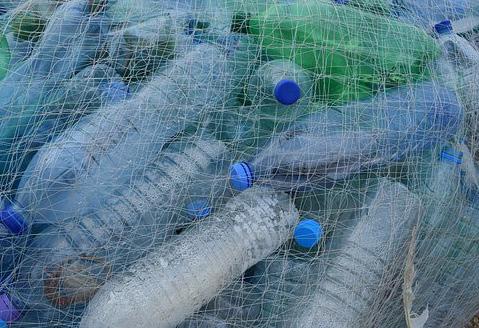
5 minute read
Where does the consumer fit in?
by 3S Media
In a bid to move towards a circular economy, the South African government has gazetted new legislation that will have a big impact on how businesses manage their products at end of life, but what about the consumer?
ccording to the State of Waste
Advertisement
AReport, South Africa generated 108 million tonnes of waste in 2017. Only 21% of that waste ended up in recycling plants, with the majority going to landfill sites – many of which are nearing critical capacity.
To drastically change this and encourage a transition towards a circular economy – where materials are reused repeatedly – government gazetted new legislation in November 2021, which will have a big impact on businesses. Producers now must take responsibility to ensure that their products are collected for reuse or recycling at end of life. This is according to the ‘Regulations regarding Extended Producer Responsibility’ (EPR) and the accompanying regulations for paper and packaging, lighting, and electrical and electronic equipment. Under these regulations, responsibility is placed on producers to work with waste management companies, as well as informal waste collectors, to establish collection and recycling schemes. Producers must also: • be registered with government within six months of the notice • submit regular audits to government • comply with rules for cleaner production, reduced rates of waste as well as reusing existing materials • pay an EPR fee. These new regulations are seen as an important step in dealing with a number of problematic waste streams in South Africa, and in moving the country to a more circular economy – a concept also alluded to in the National Waste Management Strategy.
“A more circular economy provides many opportunities for South Africa”, says Professor Linda Godfrey, principal researcher at the CSIR and manager of the Waste RDI Roadmap. “Very often, the circular economy is used as a synonym for recycling or the implementation of the waste hierarchy; and EPR is seen as the policy instrument to drive a circular economy.
But the opportunities extend beyond just waste or waste recycling, and the transition to a circular economy will require a variety of policy interventions.”
Godfrey asserts that the circular economy is about sustainable resource management and keeping resources in flow for as long as possible, at their maximum value.
“It’s about designing waste out of the system. Ultimately, the circular economy provides a means to decouple economic growth from the use of natural resources by using resources more effectively, creating a more efficient and globally competitive economy. With this broader ‘resource’ approach to the circular economy, it highlights the importance of all role players in driving this transition to a circular economy.”
Through this approach, Godfrey believes that the consumer can also play an important role in the transition to a circular economy – by being responsible consumers in the everyday decisions they make when accessing goods and services.
“It’s also time that consumers realised the power of their collective voices in influencing the behaviour of business and what products businesses put on the market.”
A disruptive role
Godfrey explains that perhaps the most disruptive role consumers can play is this concept that “you have the right to own nothing.”
She adds, “It’s a fundamental change in the way we view our role as consumers. Up until now, we’ve been told by business that we must buy things. But we’re now asking the question, ‘Can we access goods and services in a completely different way – in a less resource-intensive way?’ The sharing economy is an example of this, where I can still access the service, such as mobility, without owning the object – in this example, a car.
“This change in the way we view goods and services is finding a lot of traction with the youth who don’t want to be bogged down owning ‘stuff’. Think about music: do you still buy CDs or do you stream your music? You can still access the music, but in a less resource-intensive way, in a ‘nonownership’ way. We’re going to see more and more of these service-type businesses pop up, providing opportunities for entrepreneurs, especially young entrepreneurs, which is very exciting,” asserts Godfrey.

Incentivising behaviour change
The National Waste Management Strategy makes mention of awarenessraising as one of the three key pillars to transitioning to a circular economy, other pillars include promoting waste minimisation and efficient and effective waste services. Godfrey believes awareness programmes have been rather “ad hoc over the past years”.
She adds: “Some cities and towns have communication strategies around littering and illegal dumping, about increasing recycling. But we urgently need a national education and awareness campaign with a clear, consistent message.”
She believes that these programmes and initiatives must be combined with the provision of infrastructure and services, such as regular, reliable, municipal waste collection, as well as access to drop-off facilities for recyclables or household hazardous waste.
“We will need a suite of interventions to create this enabling environment for the transition to a circular economy, from regulation to economic instruments to education and awareness. I do believe we need to find more ways to incentivise behaviour change.”
Who must take the lead?
Godfrey explains that moving towards a circular economy must be about collaboration and publicprivate partnerships. “The reality is that government, particularly in developing countries, does not have the resources to implement a circular economy. I see the role of government as one of creating the enabling environment for the private sector to thrive. Ultimately, it will be business that drives a more circular economy and realises the business opportunities it provides – but recognising that, there will be winners and losers in transitioning towards a circular economy, and many businesses will need to adapt to remain relevant. I believe we’ve only just scratched the surface of what the circular economy, and especially the sharing economy, can provide in terms of business opportunities,” Godfrey concludes.










